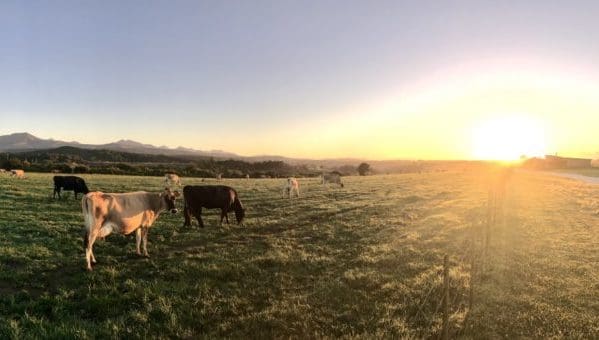Managing pastures for maximum productivity is a long term goal, but weather fluctuations, fire, insect or wildlife damage and any other unforeseen circumstances can quickly create a complex balancing act. During times of dry conditions, the urge to use as much as possible of what little forage growth there is may be overwhelming. Before doing so, producers must consider the future consequences of overgrazing pastures to obtain more grazing days.

Sarah Sommerfeld, PAg,
Regional Forage Specialist
Saskatchewan Ministry of Agriculture
No roots – no grass
Roughly two-thirds of total plant growth occurs below ground, while the above ground portion only makes up about one-third. The extensive root system forms the lifeline for forage plants and helps ensure long-term survival as well as productivity. Moisture stress can reduce or impair root growth even without added grazing pressure. When plants are repeatedly grazed, without a recovery period, the root system becomes increasingly shallow. This results in plants that are less vigorous, robust and productive.
[emember_protected for=”2″ custom_msg=’For more on this story, please see the May 25 print edition of The Cross Roads.’]
Resist the urge
The amount and distribution of dead plant material, also known as litter, on a pasture is an indicator of previous grazing management. Litter is an essential component of a healthy pasture and ecosystem. The litter left behind helps to shade and cools the soil, which reduces evaporation and conserves moisture. Litter also helps to protect the soil from erosion and maintains soil stability.
Removing every last blade of grass leads to decreasing litter carryover and increases recovery time. Effective rest is the time required for plants to recover during the growing season. The amount of rest needed depends on the amount of leaf area remaining after grazing and the time of grazing during the growing season. Under ideal conditions, effective rest for tame pastures is four to six weeks. If limited moisture is available, the plant will not regrow as quickly and a longer rest period is needed. Overgrazing plants will use root reserves for leaf area regrowth and stop allocating resources to root growth in an attempt to survive short-term. When dry conditions persist into subsequent years, desirable plants will first reduce production and eventually disappear from a pasture.
It takes moisture to grow grass
There are no quick-fix solutions to forage growth during times of dry conditions. The absence of moisture will inevitably result in absence of forage growth. Adjusting stocking rates and using alternative feeding systems helps protect pastures and ensures animal requirements are being met.
As much as it is tempting, overgrazing pastures in dry conditions is not worth the loss of production in subsequent grazing seasons. Leaving sufficient carry-over and allowing sufficient time for plants to recover may be the hardest but most critical grazing management decisions made during dry conditions.
For more information on pasture management, contact the Agriculture Knowledge Centre at 1-866-457-2377 or call the Outlook Regional Office at 306-867-5500.

